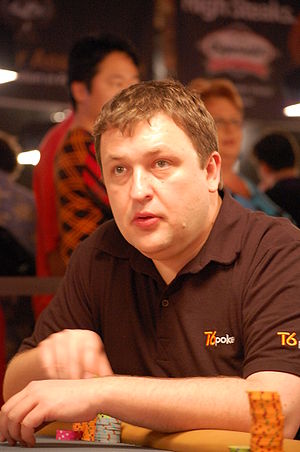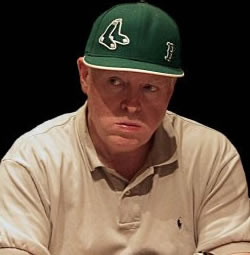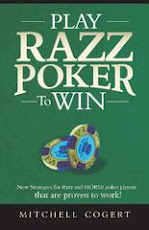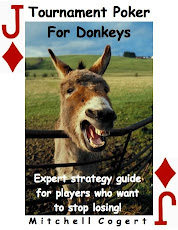 Image via Wikipedia
Image via Wikipedia
It is difficult to win small stakes limit poker games since so many players play no foldem holdem. Rather than view this as a negative, consider it an opportunity to find an advantage against bad poker play. Here are a few important tips that can turn you into a winner long term. Most of these tips I learned from Ed Miller's Small Stakes Holdem book, which I highly recommend.
1. Don't sit down at any poker table unless you have the right mental attitude.
If you are going to play poker, you must believe you are going to win. You can't play in a small stakes holdem game and be thinking that you are going to be sucked out on. Even if it's in the back of your mind, it will attract bad results to you.
A player will suck out on you eventually in these games. Don't let it effect your attitude...or your play.
2. Post flop play is more important in winning these games than knowing which starting hands you should play from which position.
Small Stakes Holdem details starting hands guidelines for loose and tight play. You will find that pairs are almost always played since they can turn into a set on the flop and win big pots. Also, you will find that flush draws are powerful hands since if they flop a 4 card draw, they get completed 35% of the time (and you will often have 5 of more opponents in a hand).
3. Know all your outs, and not just the obvious ones.
Players know how may outs needed to make their straight, a flush, two pair, etc. However, many players don't take into account all of the outs--such as a backdoor flush or straight, or hitting a card to make top pair on the river. These additional outs are important since it can make a marginal hand a strong hand.
4. Memorize Swayne's Advanced Holdem Book chart below to make it easy for you to see if you have the right odds to make a call post-flop.
The minimum number of bets in the pot to justify seeing the next card:
- Four flush=6 (for a flush)
- Open ended straight=7 (for a straight)
- No hole card paired, like AK=9 (for high pair)
- One hole card paired=11 (2 pair or 3 of a kind)
- Pocket pair=26 (3 of a kind)
5. Understand pre-flop which pots are likely to be big ones and which ones will be small one's as it dictates how to play your hands post flop.
Use the Small Stakes Holdem guidelines on which pots will be big ones:
4 players call a raise pre-flop or 6 players call pre-flop
And when you have a premium hand pre-flop, don't be afraid to re-raise and even cap the pot. That means if you are in the big blind with AA, KK, QQ, or AKs, and you have 5 callers, raise the pot. You have the right equity to build the pot and possibly win a big one.
6. It is critical to adjust your play to the size of the pot.
In big pots protect your hand and/or build the pot size by pumping the pot when you have the lead or a very strong draw. But don't make the common mistake of getting stubborn in small pots by calling with weak hands. It will end up eating into your profits.
7. Sometimes it is better to call a bet on the flop even though you have the lead, and wait to make the raise on the turn.
This is counter to typical strategy. For example, if you raise pre-flop with KK and the flop is coordinated like Q-10-7 most players would bet and raise. A raise on the flop will not get players to fold with a draw in big pots.
However, if the player to your right bets, consider just calling the bet. If the turn card is a safe one, here it would be like a 2, 3, 4, 5, when your opponent bets, raise his bet, so other players will be faced with 2 big bets to call.
Since limit poker continues to lose popularity, learning how to play smarter in limit may give you an easier opportunity to win money--but you need to commit to a deeper understanding of the game by reading, practicing, and learning.
What do you think?
Good luck!













